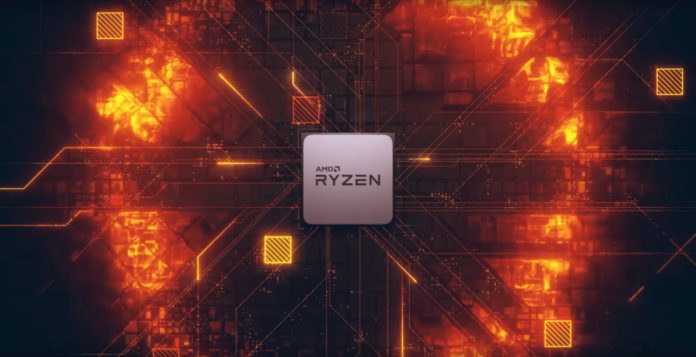Today, we’ll be reviewing the 3rd Gen AMD APU, the Ryzen 5 3400G. Although it was launched alongside the 7nm Zen 2 based CPUs, it uses the older Zen+ cores and essentially shares the same design as the older 2400G based on the 12nm node. So why re-release the same product again. Two reasons, the 7nm process isn’t that mature just yet and as such the chips manufactured using it are more expensive, secondly, releasing a quad-core APU on the same node would possibly cannibalize AMD’s upcoming Ryzen 3 3200 and 3300 processors, giving consumers little reason to buy the latter.

With the exception of the gaming consoles, the Ryzen 5 3400G is the most powerful consumer APU. Moreover, people often ask whether chips like these can compete with the custom silicon solutions powering the Xbox One and PS4. In this post, we’ll explore the gaming performance of the Picasso APU with and without a discrete GPU and see how it stacks up against contemporary consoles.
For reference, the Xbox One console runs most games at 720p 30-40 FPS (at high) while the PS4 renders at 1080p in the same FPS range.
Testbench:
- CPU: AMD Ryzen 5 3400G
- Motherboard: ASRock Taichi X570
- GPU: ASUS GeForce RTX 2080 Ti
- RAM: Trident Z Royal 16GB @ 3200MHz
AMD Ryzen 5 3400G Gaming Benchmarks (with RTX 2080 Ti)



There’s a major performance delta between the 3rd Gen Ryzen CPUs and the Ryzen 5 3400G. It gives a fair idea of the kind of improvement the new chips provide in terms of IPC and gaming performance. In Shadow of the Tomb Raider and Deus Ex: Mankind Divided at 1080p, the Picasso chip barely manages to pass the 60 FPS mark and that’s when paired with the might RTX 2080 Ti.
Ryzen 5 3400G Integrated GPU Gaming Performance

Without the power of a discrete GPU, the graphics settings have to be dropped to low to sustain playable performance. However, in most eSports titles the Vega GPU performs rather admirably with average frame rates being well above 60 FPS. Even in a demanding game like Far Cry, the Picasso APU manages to claw its way to the 30 FPS mark. That’s on par with modern consoles!
Productivity and Content Creation

In the CPU-Z benchmark, the Ryzen 5 3400G beats the 1st Gen Ryzen CPU by a notable margin in the single-threaded test but gets left behind in the multi-core bench on account of lesser threads.


The compression speeds take a major hit while going from the Zen 2 based Ryzen 3000 processors to the older Zen+ Picasso part. The Ryzen 5 3600 is almost twice as fast compared to the 3400G in 7-zip data compression workloads. The decompression speeds are relatively better but nothing compared to the newer 7nm CPUs.



When it comes to rendering and video editing related tasks, although the single-threaded performance is decent, the overall multi-threaded showing can’t keep up with AMD’s newer offerings.

Kraken and Jetstream mainly leverage a few cores and as you can see, the performance delta between the mid-tier and high-end parts is rather small. All the Zen 2 CPUs perform identical
Conclusion: Decent Budget Console Alternative
People who opt for consoles often say that PC gaming is costly. Looking at the Ryzen 5 3400G, it’s clear that that is a misinformed lie. Yes, high-end PC Gaming is expensive but the entry-level setups cost pretty much the same as modern-day consoles, with some added features. You also get the option to upgrade later on with a dedicated graphics card and faster storage. Of course, most PC enthusiasts often expect 60+ FPS in their games at the absolute maximum graphics preset, but that’s a discussion for another day. For the average gamer, the Ryzen 5 3400G is just fine.


